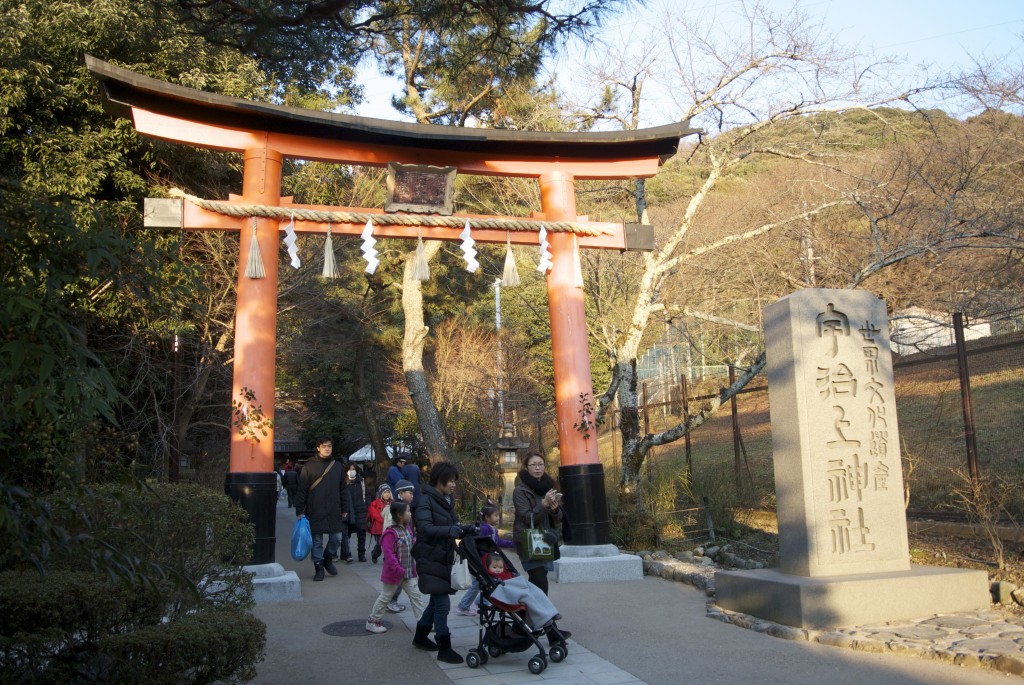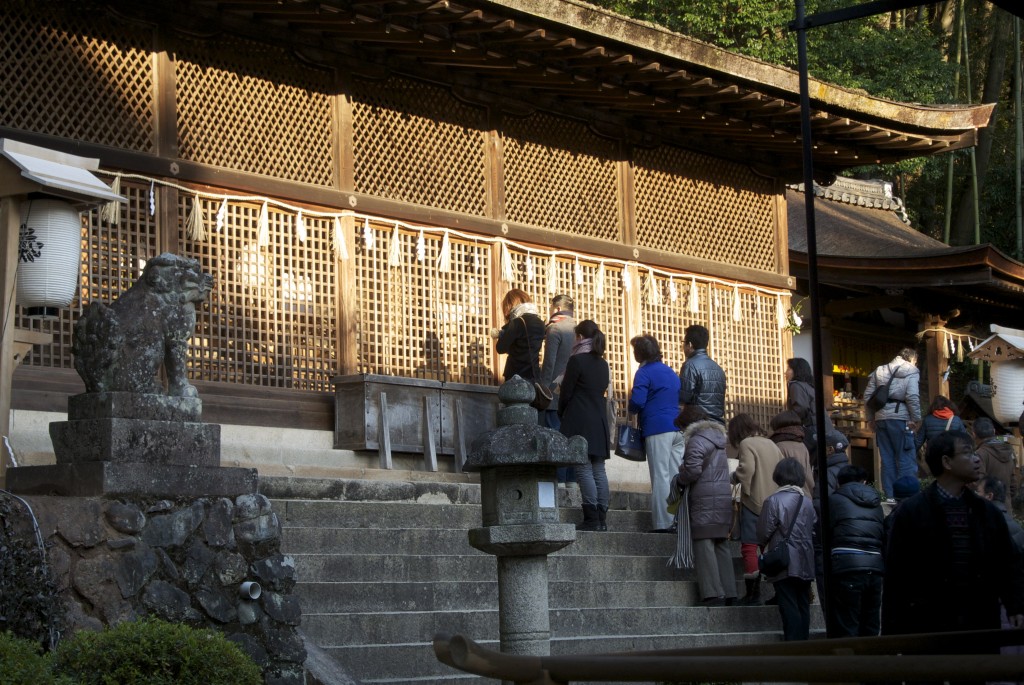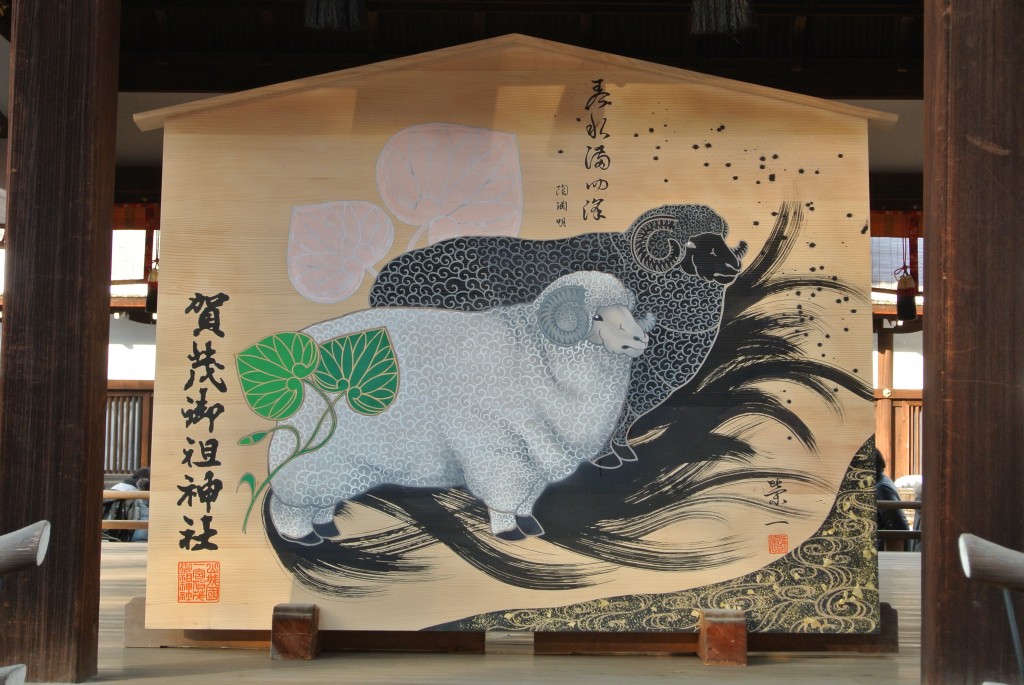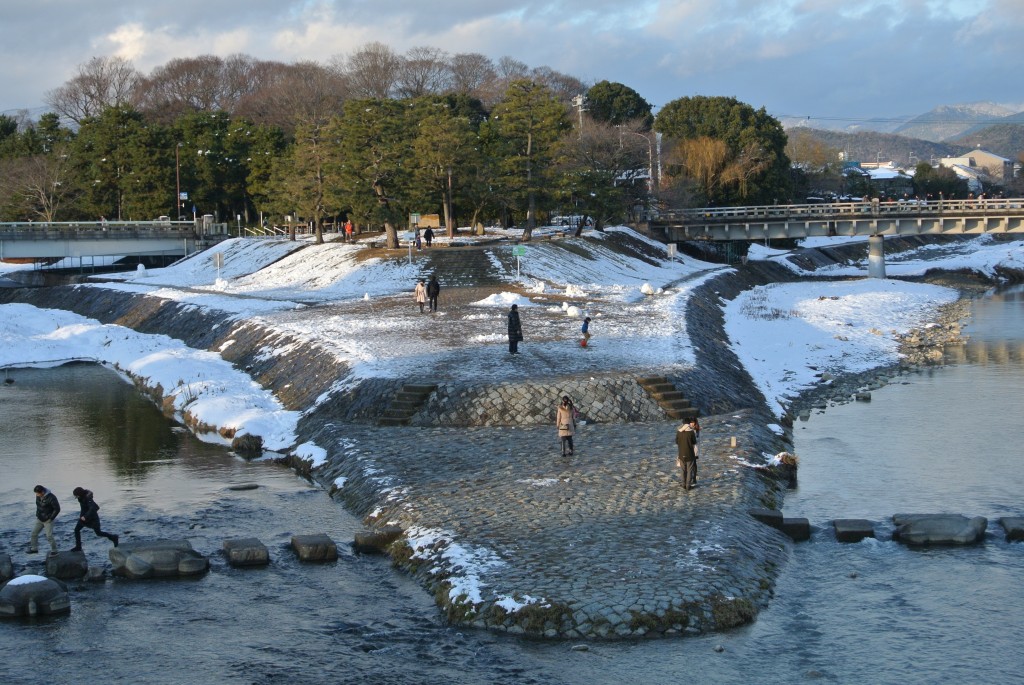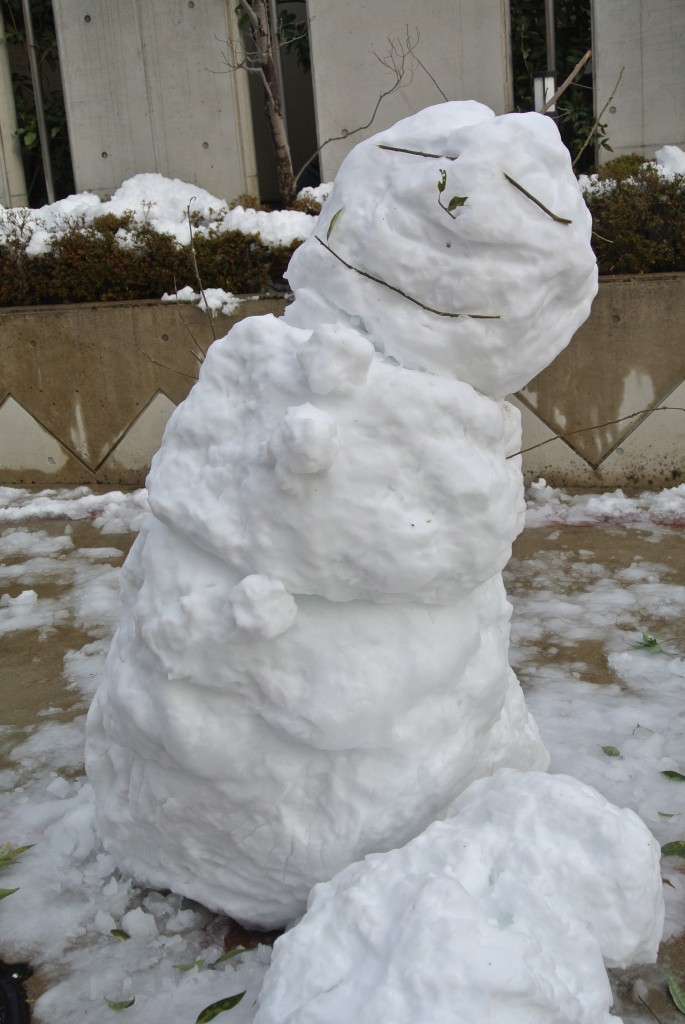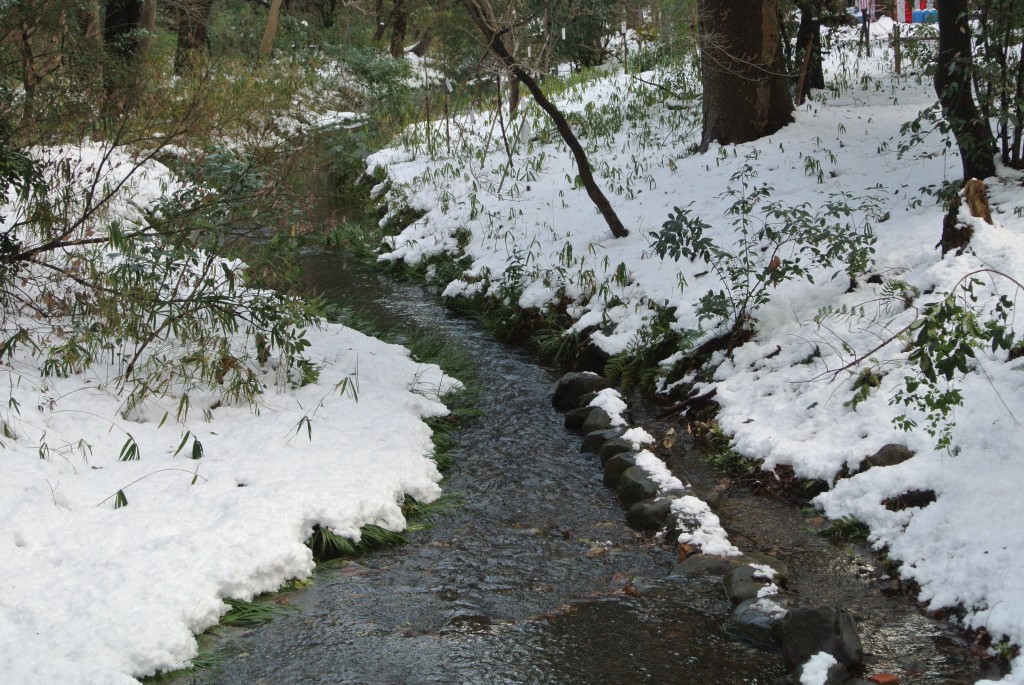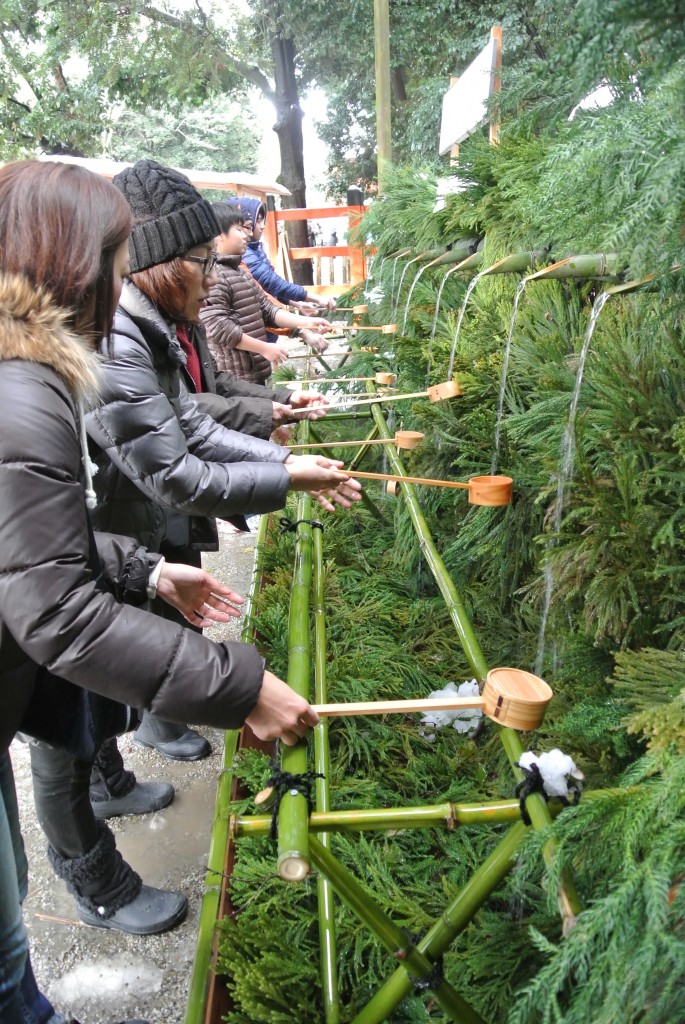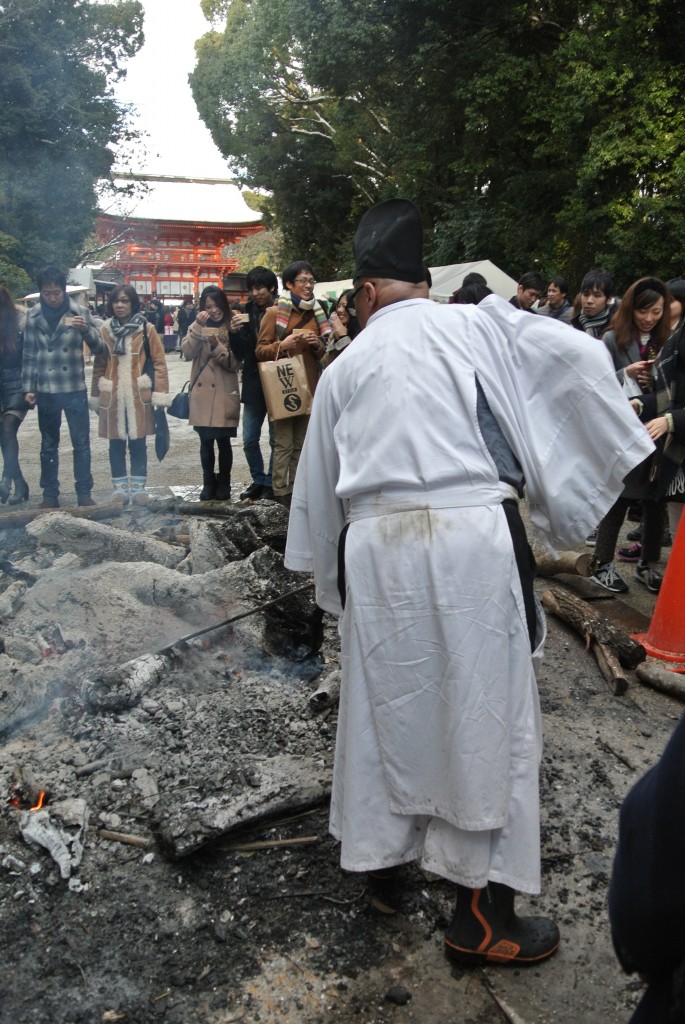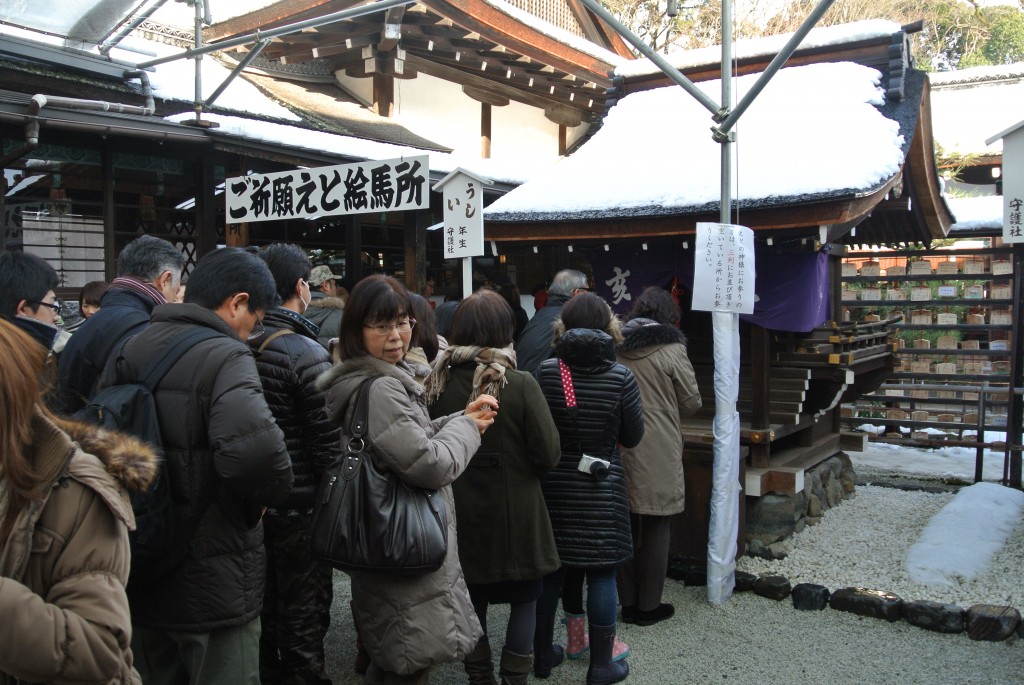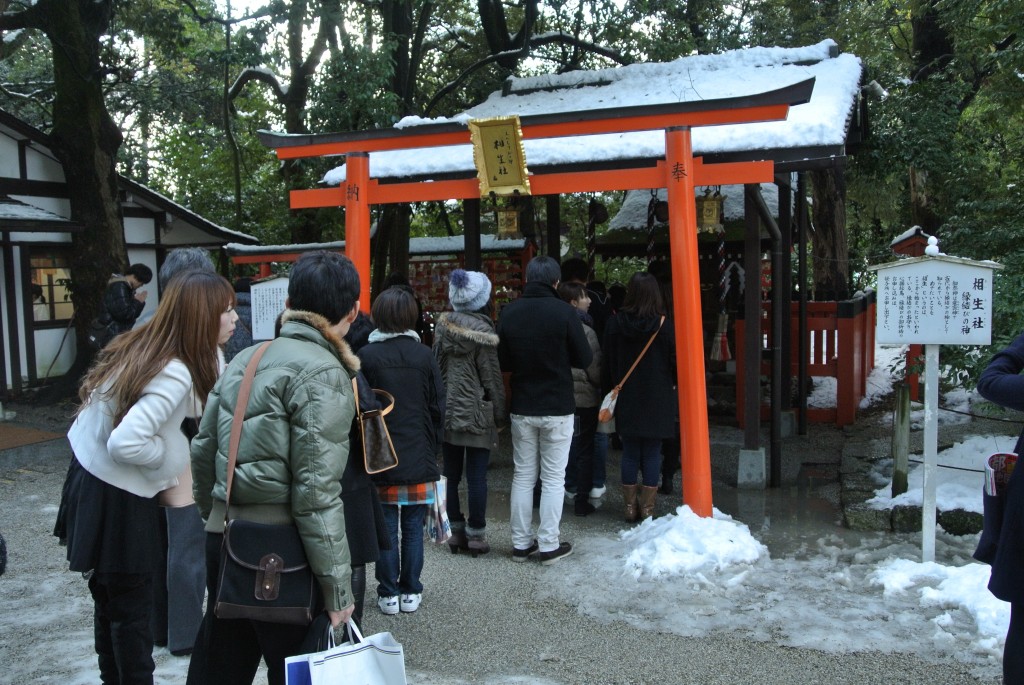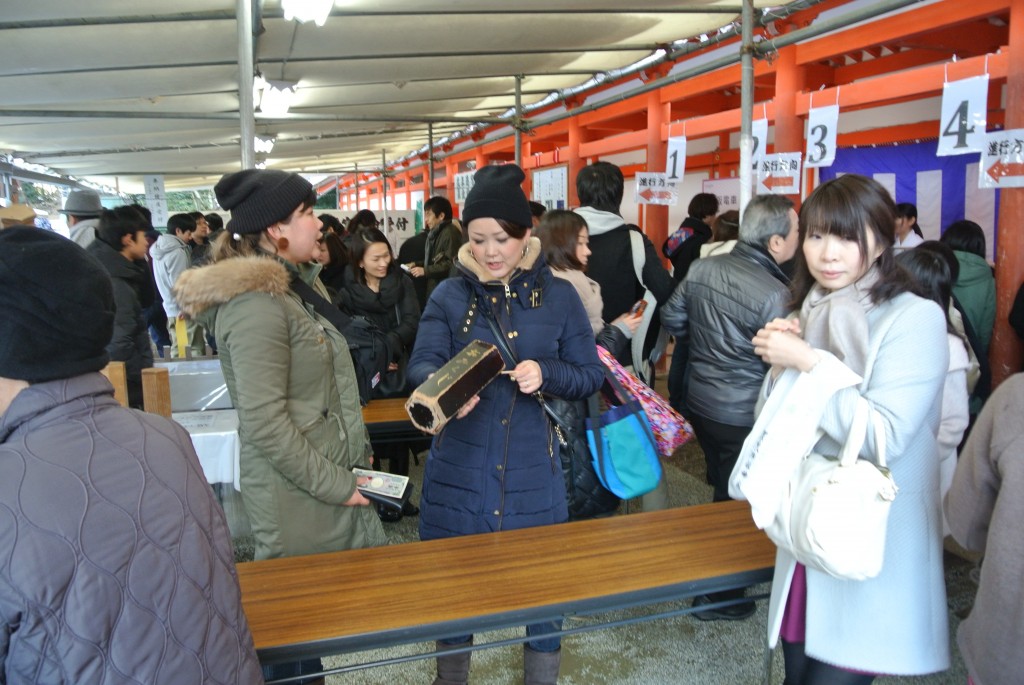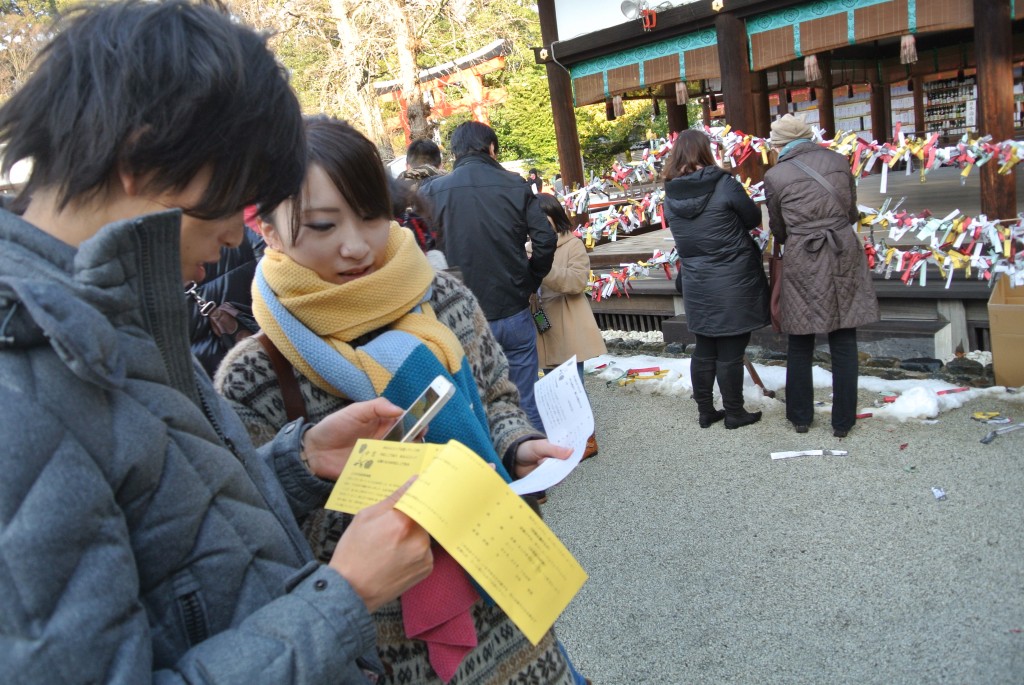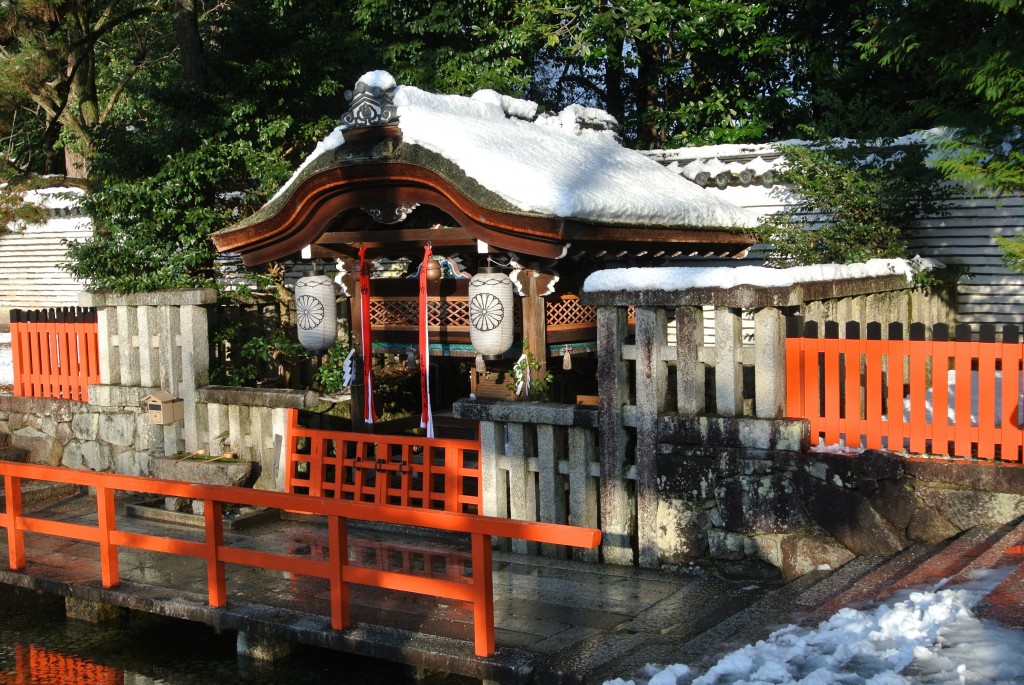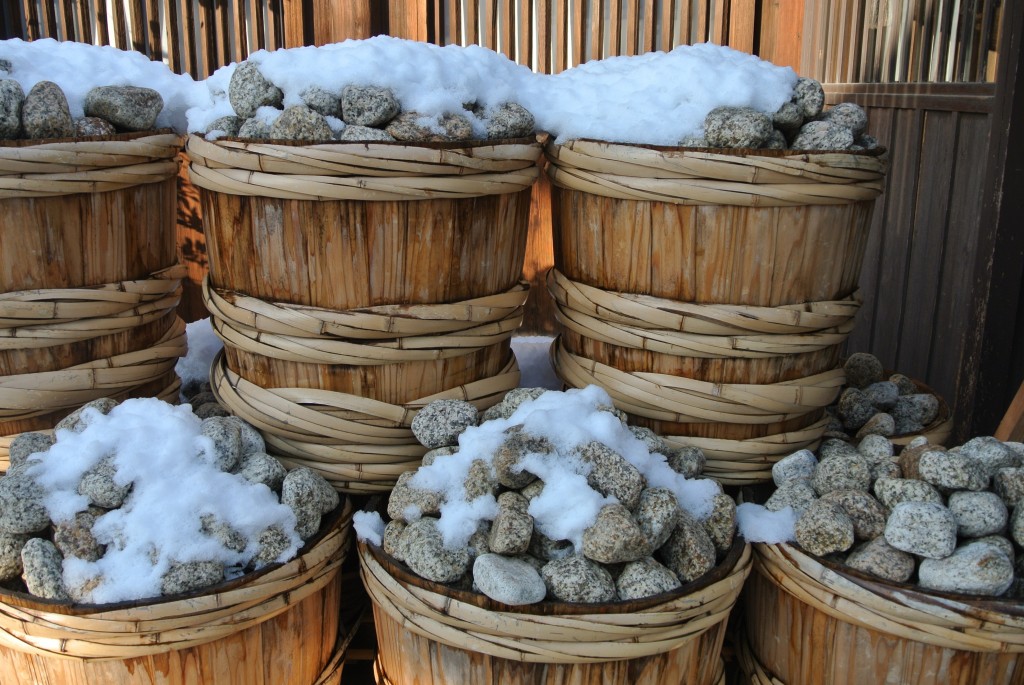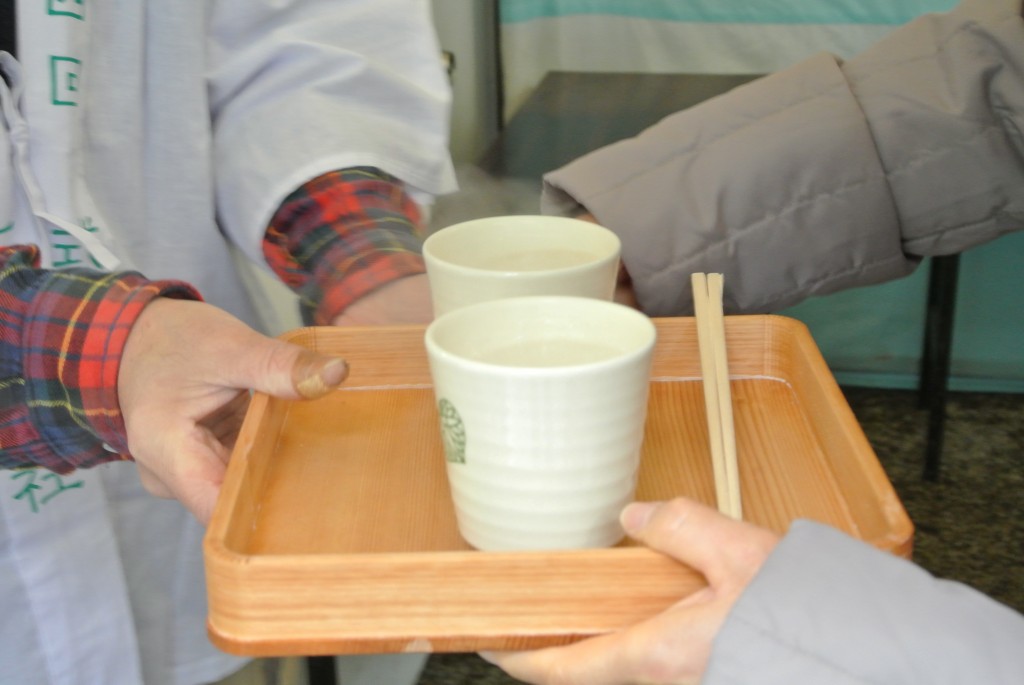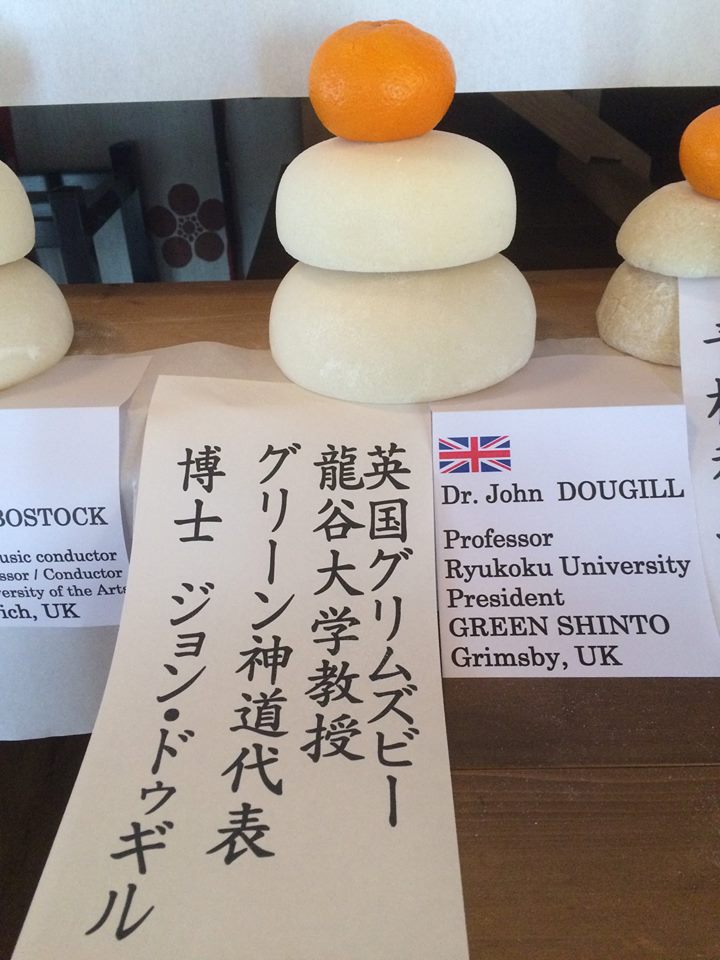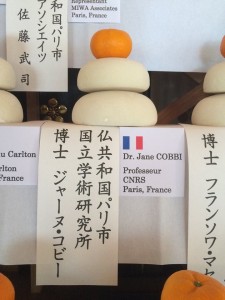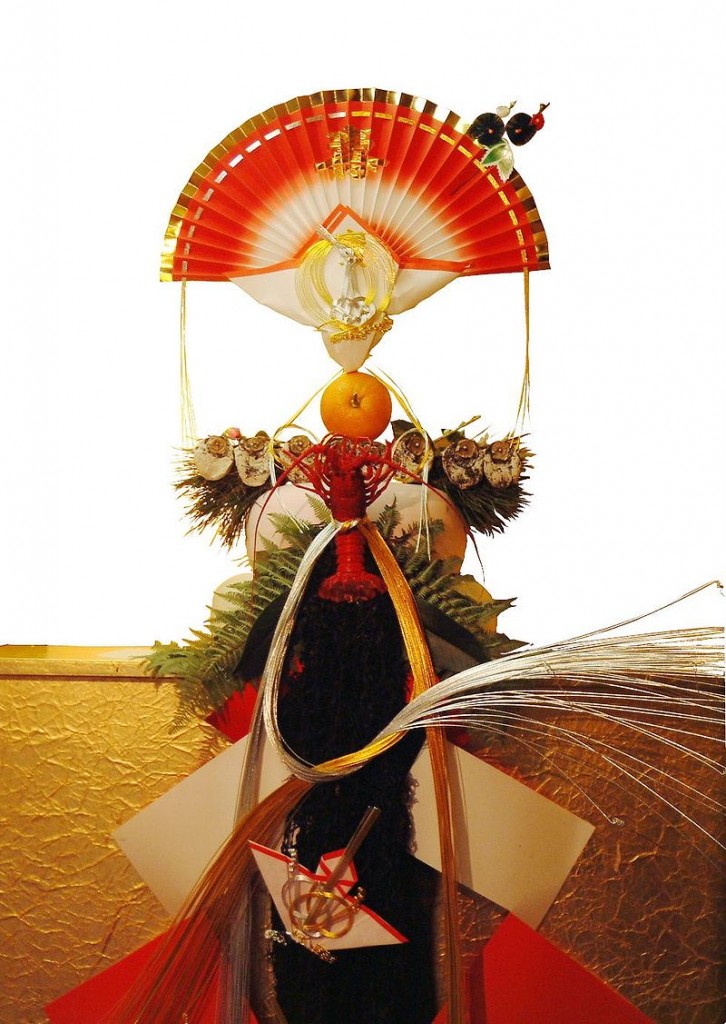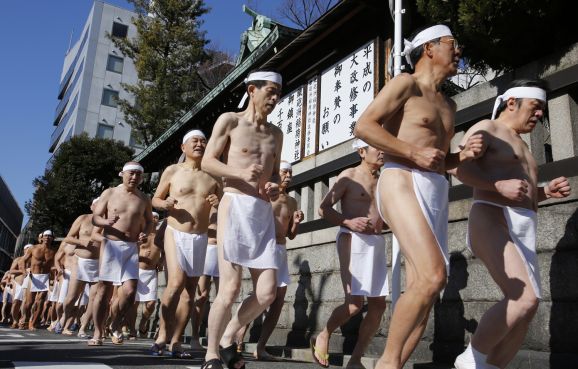
Bathers run around Teppozu Inari Shinto Shrine before dipping into a tub of cold water with blocks of ice during a winter ritual at the shrine in Tokyo on Sunday. More than 100 people gathered for the mid-winter event (Kanchu misogi) to pray for a healthy new year. (AP Photo/Shizuo Kambayashi)
The beginning of a new year in Japan is a time for many purifying events to signify a fresh start, free of the spiritual pollution accumulated in the past year. Japan Today carries an article today highlighting the event above at the Teppozu Inari Shrine in Tokyo.
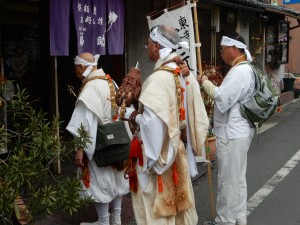
Yamabushi members carry out part of their cold weather austerities by soliciting funds from local shops near Kyoto's Ebisu Shrine
Misogi austerities are syncretic, carried out at both temples and shrines, and yesterday while visiting the Ebisu Shrine event in Kyoto I noticed some yamabushi (mountain ascetics) collecting funds from the local shops while carrying a banner saying they were involved in cold weather austerities. They told me they were Shingon members attached to Toji temple and in syncretic fashion had come to join in the shrine festivities of Toka Ebisu (see picture to the right).
The mass misogi at Teppozu Inari consists of warm-up ‘rowing’ exercises with group chants following which participants run around the shrine and then immerse themselves in tubs of freezing cold water containing ice blocks.
The whole event takes some 30 minutes, and for a 4-minute video of the Kanchu misogi at Teppozu Inari shrine click here. For a thumbnail overview of the whole event, please see this link.
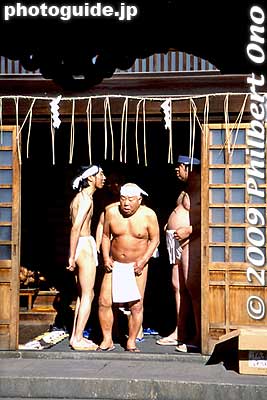
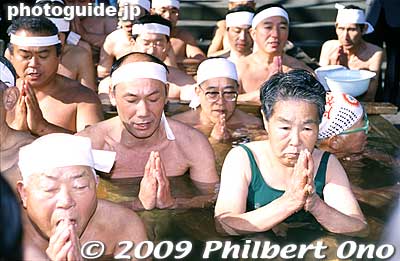
In the first picture above, the former shrine priest emerges from the shrine to lead by example. He was a remarkably youthful man in his 80s, so his cold water austerities had stood him in good stead!
The shrine is unusual in having a Fujizuka slope created from the lava of the volcano. It is open for climbing on July 1st, and ascending is said to bring the same spiritual merit as climbing the mountain itself. (Access to the shrine: From Ueno, take the Hibiya Line to Hacchobori stn. (10 min.) and walk south (10 min.)
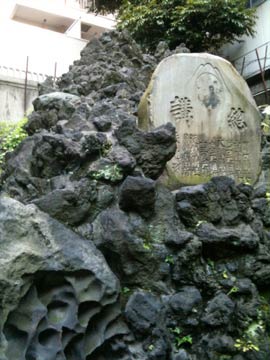
The Fujizuka at Teppozu Inari Jinja

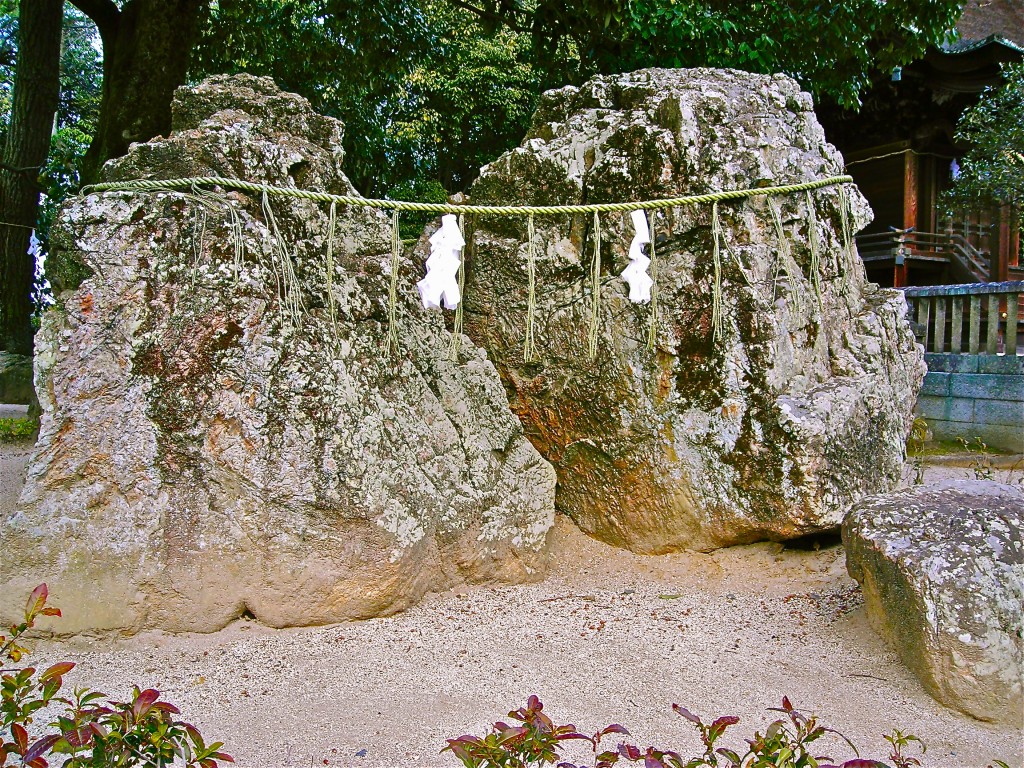
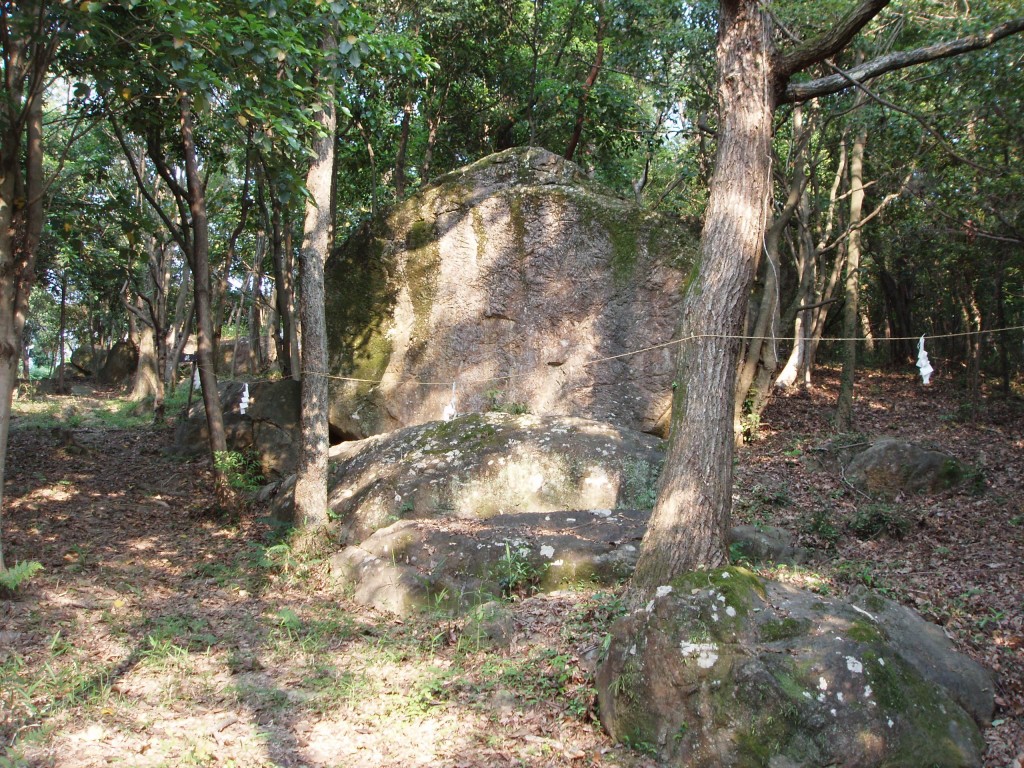
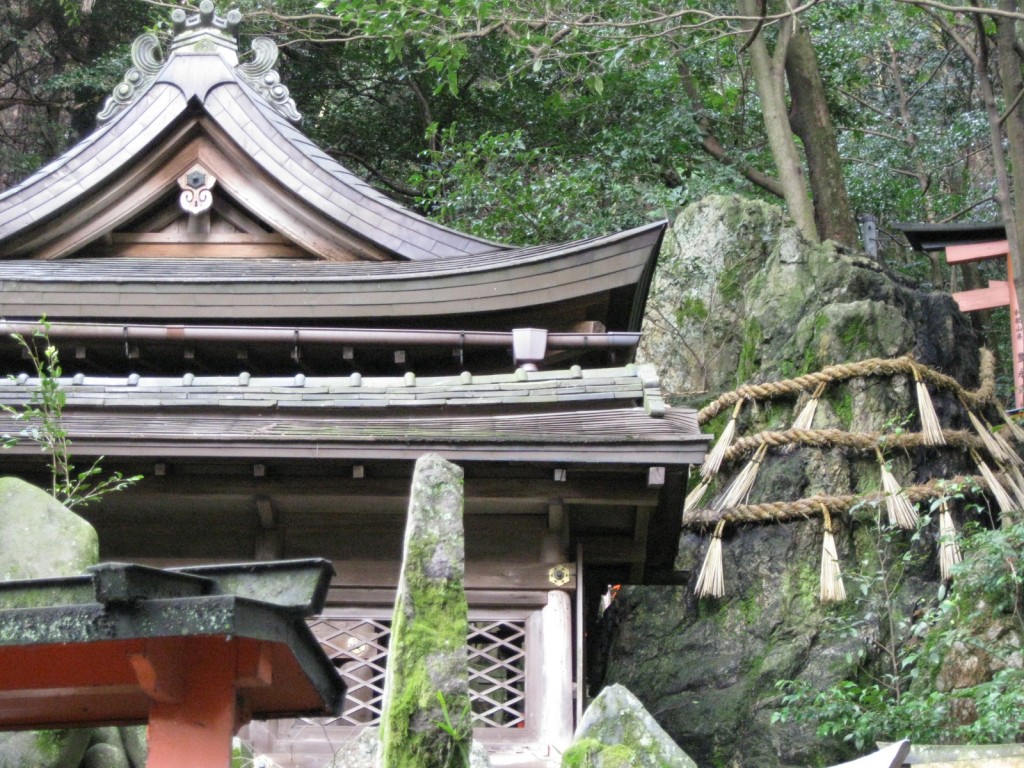
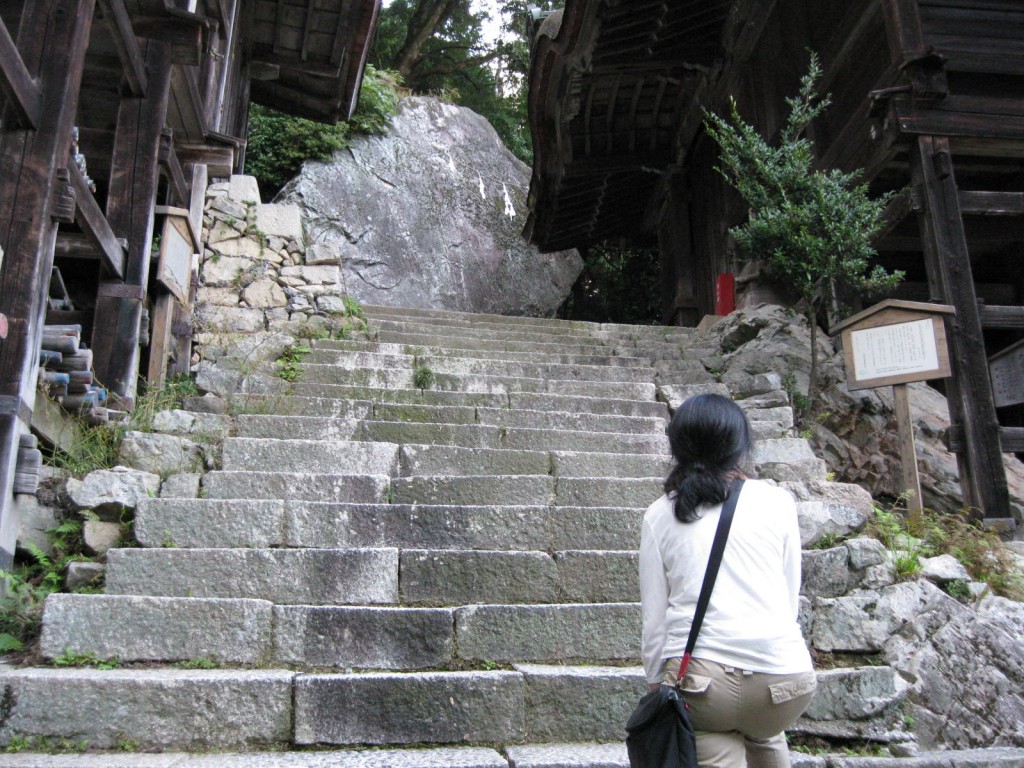
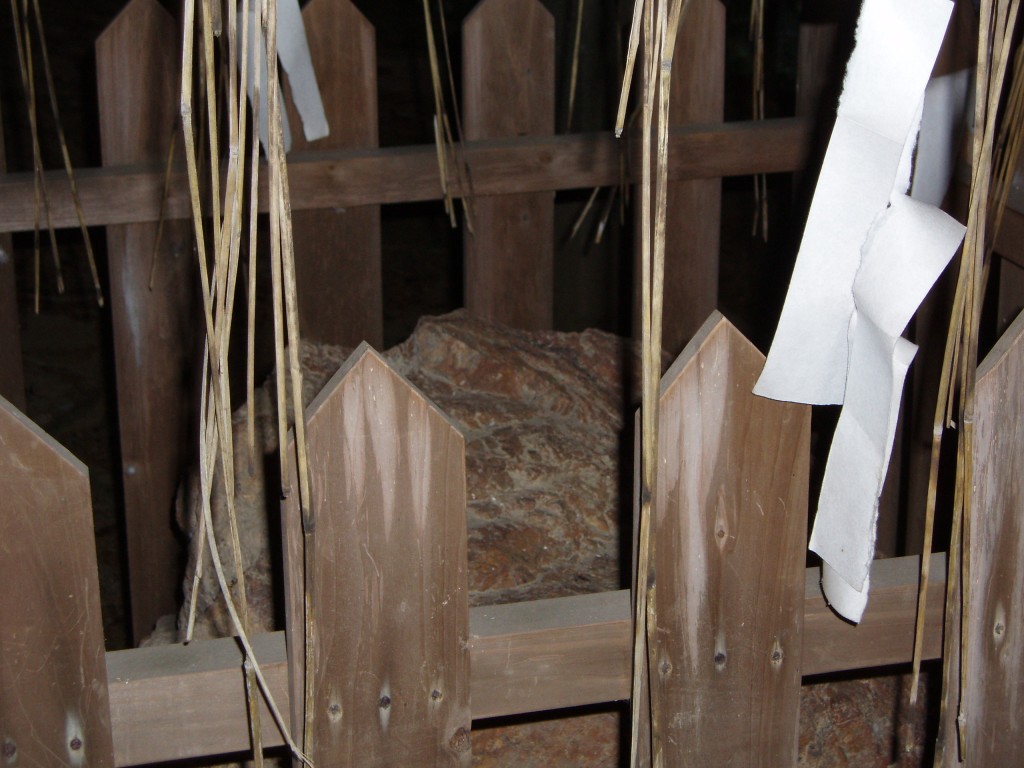
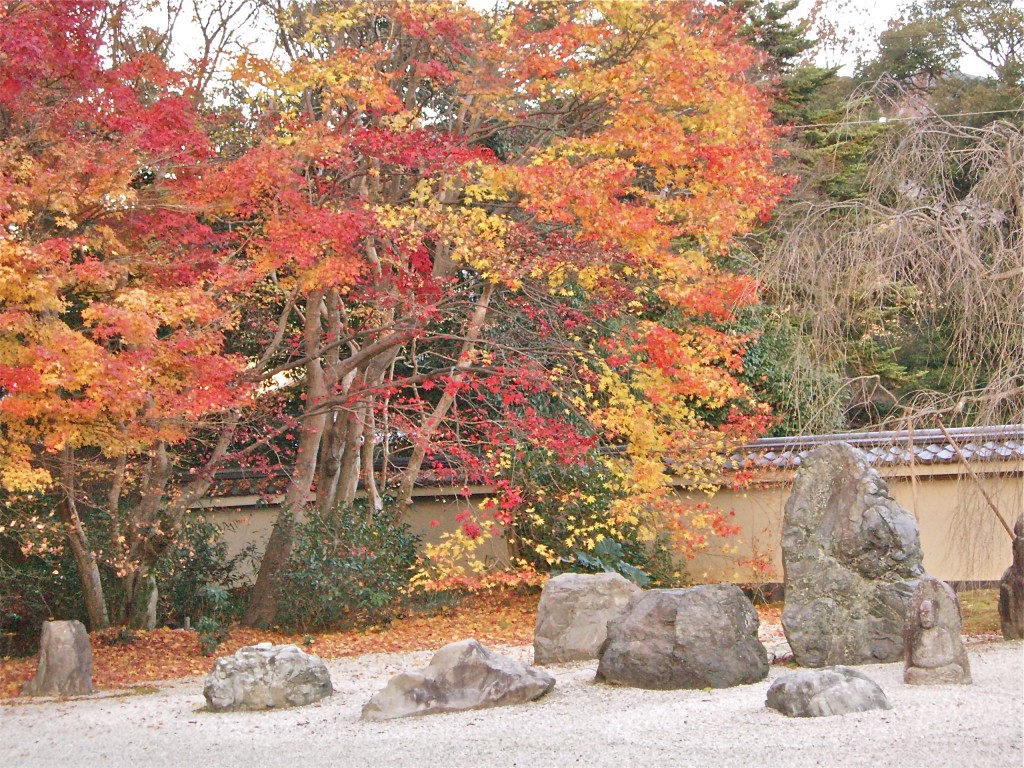
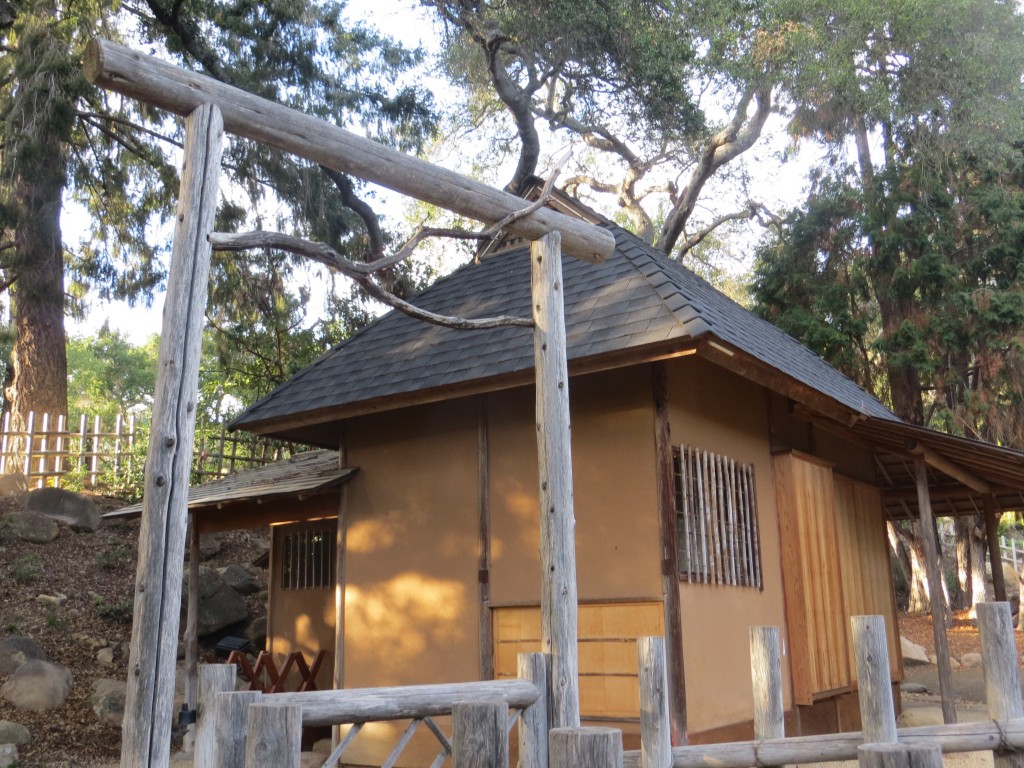
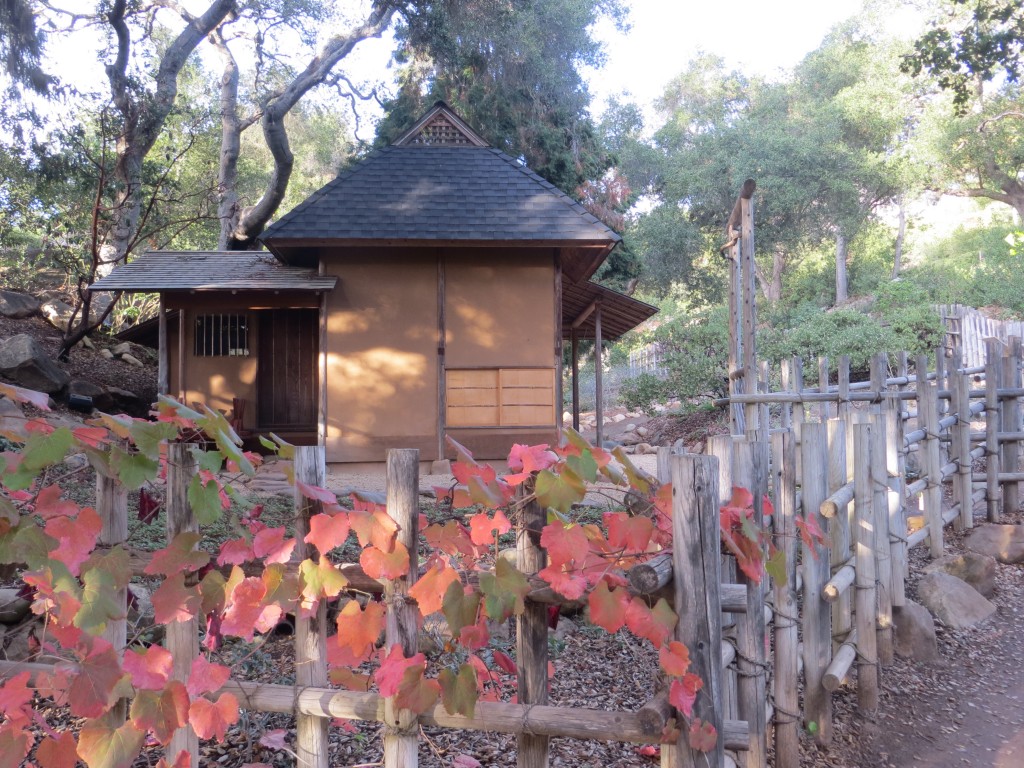
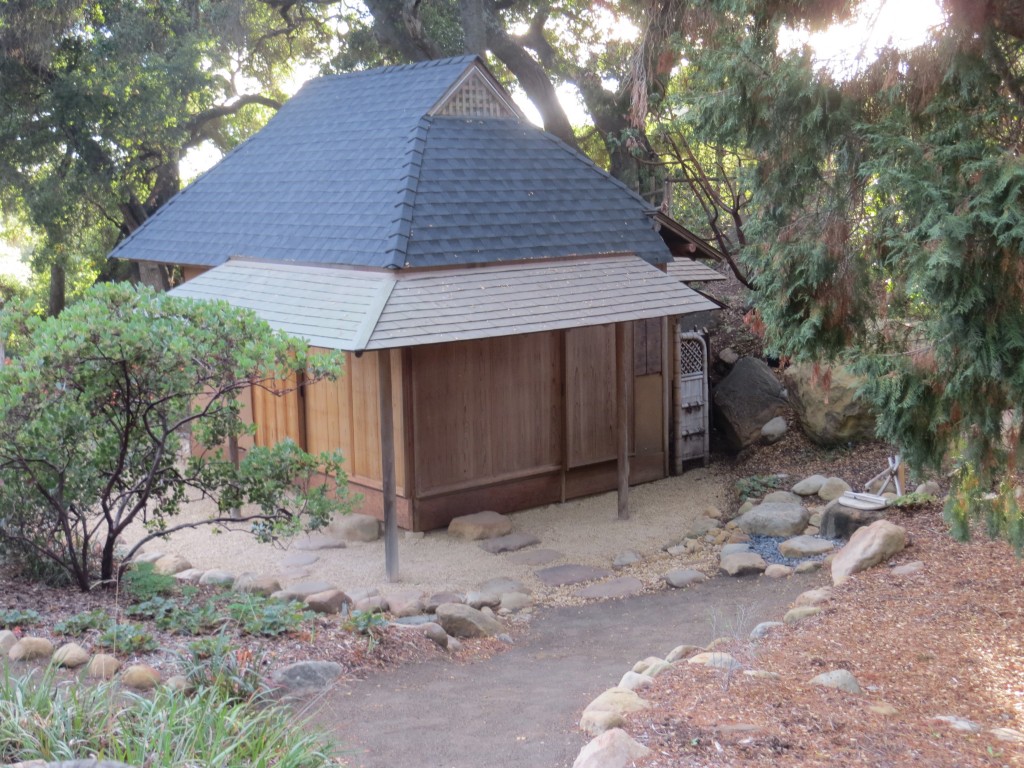
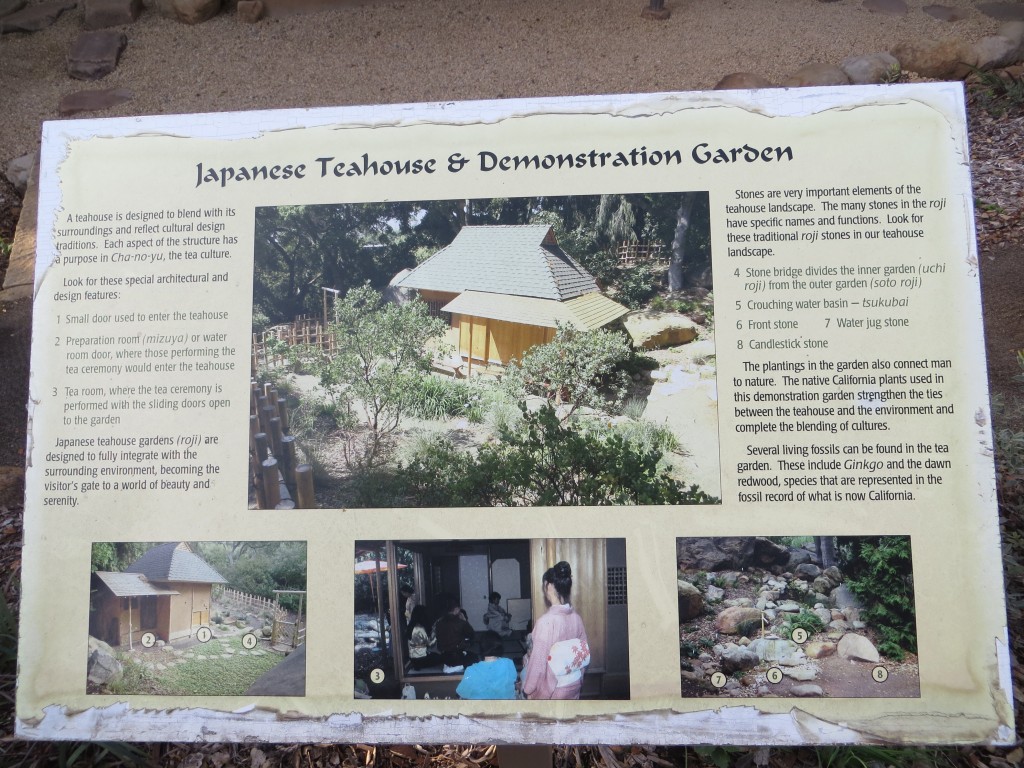
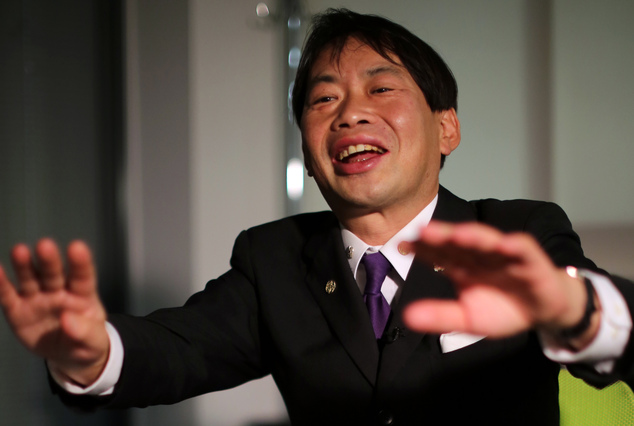

 There was a happy Christmas at Ujigami Shrine near Kyoto, for the kami there were restored to their home after being relocated during the extensive repairs carried out. There is often speculation about the nature and location of kami since they are spirits and thereby immaterial. However, Shinto tradition ascribes their unseen presence to ‘spirit-bodies’ (goshintai) within the shrine. These are sacred vessels of some kind into which the spirit descends, typically a mirror but anything from a rock to a doll to a sword.
There was a happy Christmas at Ujigami Shrine near Kyoto, for the kami there were restored to their home after being relocated during the extensive repairs carried out. There is often speculation about the nature and location of kami since they are spirits and thereby immaterial. However, Shinto tradition ascribes their unseen presence to ‘spirit-bodies’ (goshintai) within the shrine. These are sacred vessels of some kind into which the spirit descends, typically a mirror but anything from a rock to a doll to a sword.